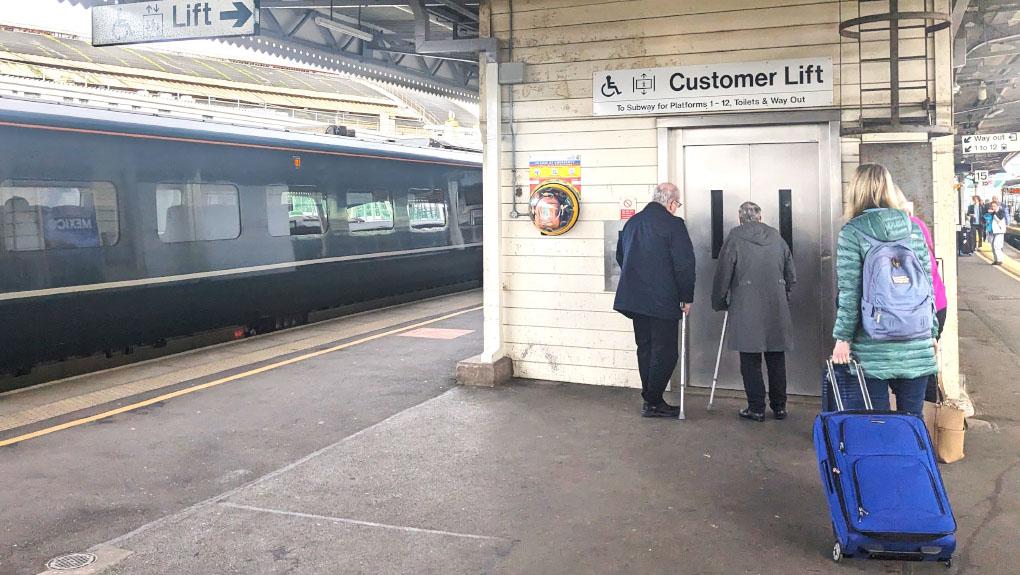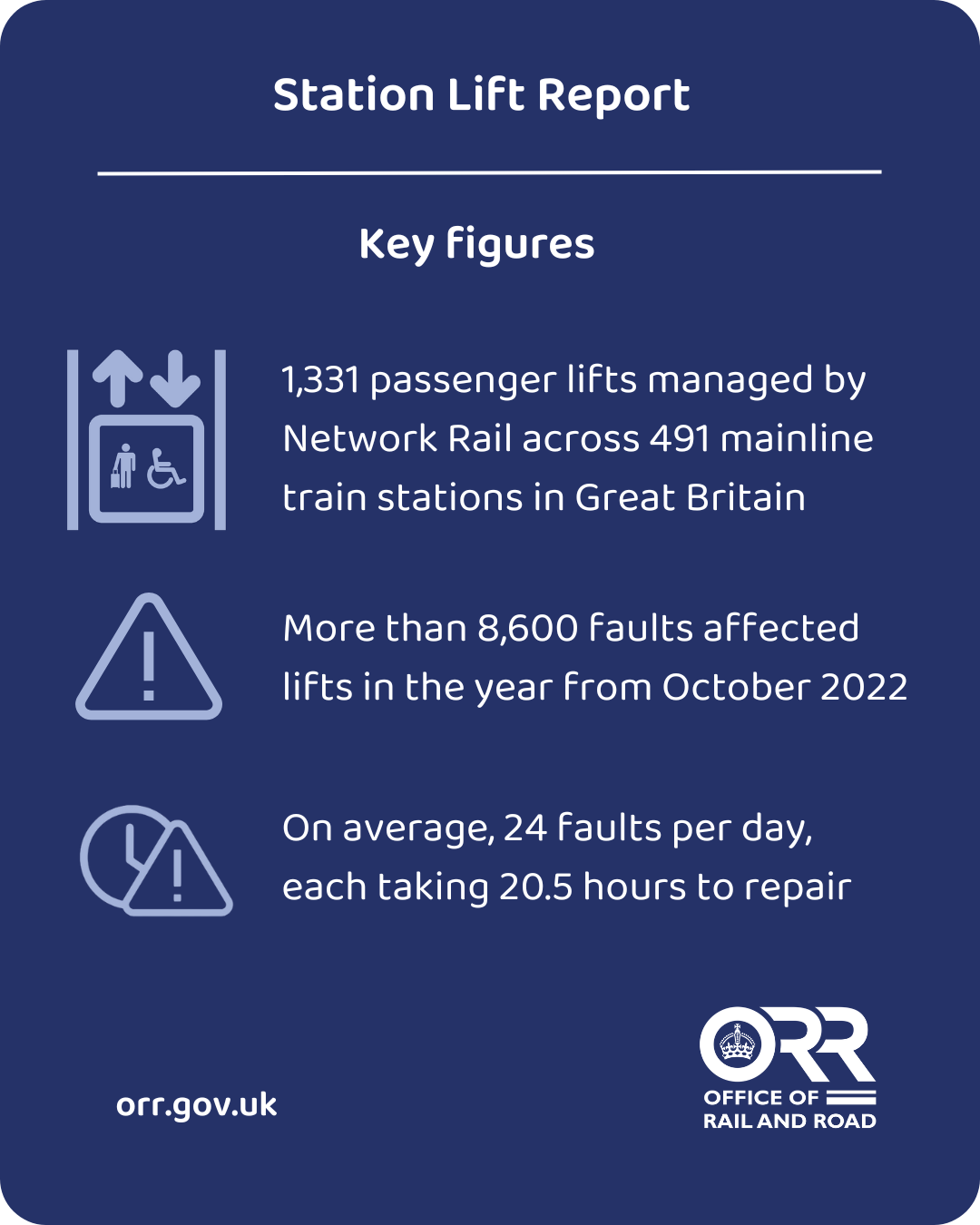- There’s been good progress on real-time information on lift availability, but more needs to be done across industry to make sure that all lifts can automatically report their status.
- The Office of Rail and Road (ORR) will take a deeper look at Network Rail’s approach to planning and carrying out lift maintenance and repairs.

The Office of Rail and Road (ORR) has today published its report reviewing the reliability of lifts at stations on Great Britain’s rail network, and information provided to passengers regarding lift faults.
There are 1,331 passenger lifts managed by Network Rail, at 491 stations. In the year from October 2022 there were over 8,600 faults. This is an average of more than 6 faults per lift, or 24 faults each day on the network. Each fault takes an average of over 20 hours to repair. In the same year passengers got trapped in a lift 601 times.
ORR’s report raises concern over the rate of lift faults, and an apparent decline in performance over time, and the regulator expects Network Rail to take appropriate action to reduce their occurrence. ORR has announced a review of Network Rail’s monitoring and management processes to ensure it is taking appropriate measures to plan and carry out maintenance and repairs.
Network Rail has acknowledged the findings and said they are already taking steps to address lift performance.
ORR wants all passengers to be able to plan their journey and travel with confidence. To allow them to do so, live information about lift availability should be readily accessible.
The regulator found that there has been progress in making real-time information on lift availability accessible to passengers and staff. Network Rail has been working closely with train operators to ensure that the in-lift monitoring technology is working, with 86% of lifts now able to automatically report their status. They have also made this live information available to third-party developers, so that the information can be built into bespoke apps and integrated into existing website platforms. ORR will continue to monitor delivery.
ORR will continue reporting twice a year on the number and duration of faults, and other passenger-impact metrics.
Stephanie Tobyn, ORR’s Director of Strategy, Policy and Reform, said:

Notes to Editors
- Network Rail is the owner and manager of national mainline rail infrastructure in Great Britain and is responsible for managing station lift and escalator assets at all stations (with some rare exceptions). This includes strategic decisions on the installation of new assets, and management of the portfolio of existing lifts.
- Network Rail is also responsible for liaison with their principal clients; station operators. This station operator role is mostly done by the main train operator using that station – for example, Northern is the station operator for 447 stations across the north of England. Network Rail is the station operator for 20 of the largest stations in the country, such as Birmingham New Street and London Waterloo. Station operators have an important role to play in monitoring operations, alerting Network Rail and the lift engineer to any faults, and providing information to passengers.
- Network Rail’s key activities in relation to maintenance, repair and incident response include:
- Identifying where infrastructure investment can improve reliability, for example to prevent flooding of lift shafts;
- Gathering data that enables lift performance to be monitored, and using this information to drive improvement;
- Management of a ten-year national lift engineering maintenance contract, currently with Stannah;
- Redesign and re-procurement of the contract, due in 2024;
- Regular liaison with station operators, including the stations that Network Rail manage, and with Network Rail regions; and
- Leading and participating in cross-industry projects on lifts, such as the workstream on real-time information described.

